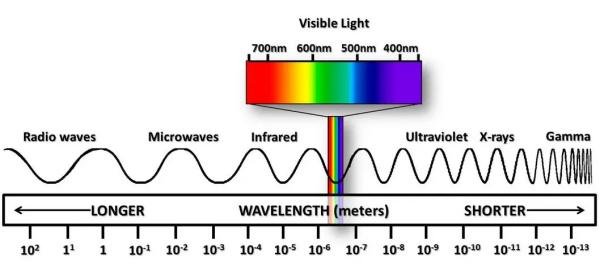Notizie sul settore
Che cos'è l'infrarosso a onde corte? Principali vantaggi della tecnologia di imaging a infrarossi a onde corte
1. What is shortwave infrared?
Short-Wave Infrared (SWIR) is a part of the electromagnetic spectrum, usually defined as light with wavelengths in the range of 0.9 to 2.5 microns. This wavelength range of shortwave infrared is between visible light and conventional infrared.
Shortwave infrared has some unique characteristics and is very valuable in many fields. For example, short-wave infrared can penetrate certain materials, such as fog, smoke, certain plastics, etc. That is to say, it can penetrate some unknown environments better than visible light or conventional infrared.
In addition, many substances have unique reflection or absorption properties in the shortwave infrared band, which can be exploited for specific spectroscopic analysis or imaging applications. For example, water has strong absorption properties in the short-wave infrared band and can be used to detect humidity in an area.

The electromagnetic spectrogram
2. Main advantages of shortwave infrared imaging technology
Shortwave infrared imaging technology is a technology that uses the spectrum of the shortwave infrared band (0.9-2.5 microns) for imaging. Compared with visible light and other infrared bands, shortwave infrared imaging has the ability to penetrate haze, smoke and certain materials.
In fact, many substances have unique spectral characteristics in the short-wave infrared band, which makes them have broad application prospects in military, environmental monitoring, medical imaging and other fields.
The main advantages of shortwave infrared imaging technology include:
(1) Imaging can be performed at night or under poor lighting conditions without the need for additional light sources.
(2) Ability to see through fog, rain, frost, snow and other climates.
(3) Ability to detect temperature changes of the object being measured.
(4) Can see through some non-see-through materials, such as plastic.
(5) In some applications, such as particulate matter monitoring, it has higher sensitivity than other imaging modes.
It should be noted that shortwave infrared imaging technology has higher requirements for imaging equipment, such as high-quality detectors and specialized optical lenses. Moreover, complex environmental or climatic conditions may affect the quality and accuracy of imaging.

